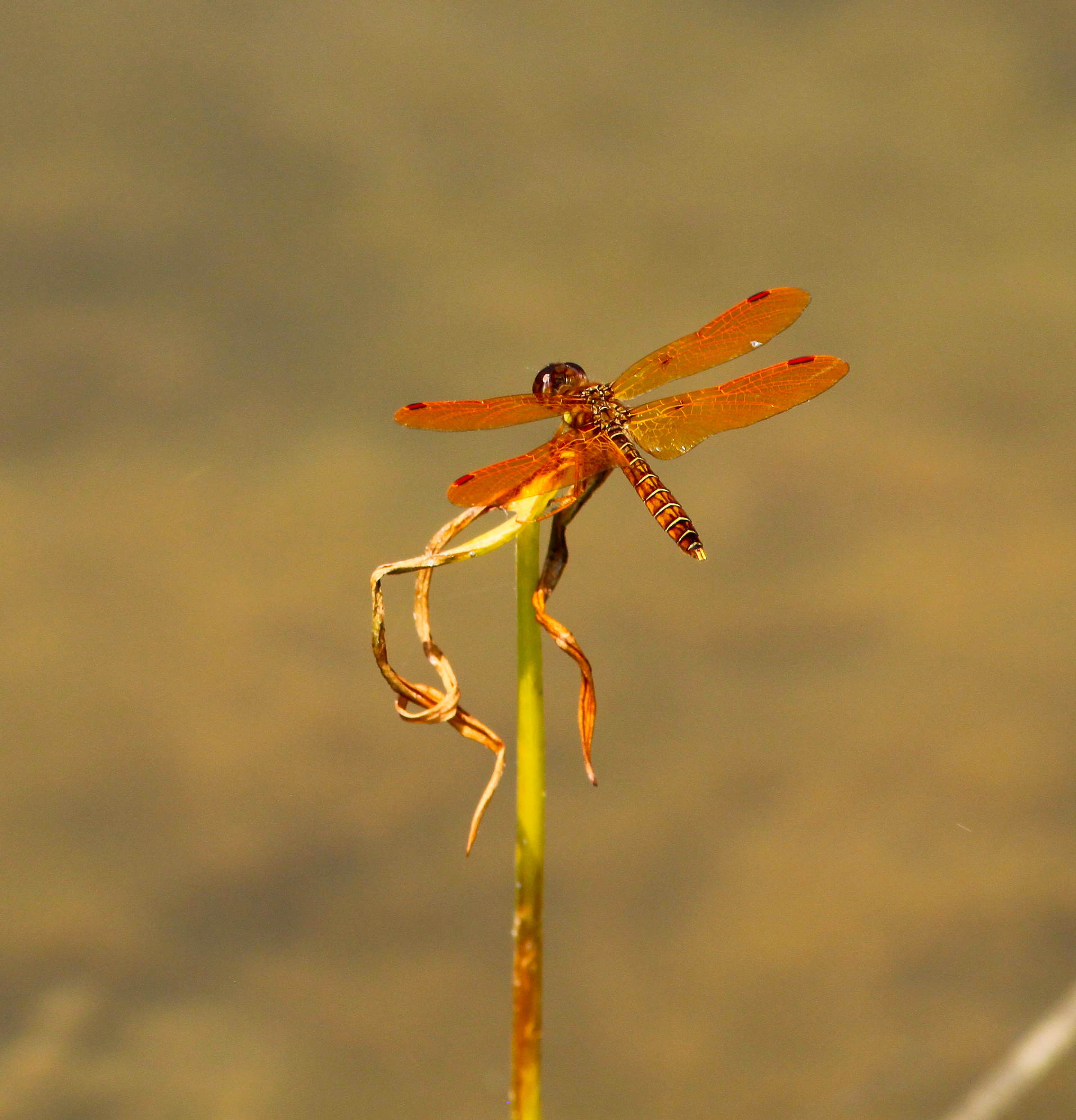Photo by Steven D. Bailey
Since volunteering to record dragonfly and damselfly sightings for the Illinois Odonate Survey a few years ago, I’ve learned just how fascinating and beautiful these creatures are. Anywhere there’s water in summer, you’ll likely find an odonate, which refers to dragonflies and damselflies.
Odonates have been on this Earth for 300 million years, as far back as the dinosaurs. At one time, they were the largest flying insects, some with 2.5-foot wingspans.
Do you know the difference between dragonflies and damselflies? Generally, a dragonfly holds its wings out, while the damselfly (typically a weaker flier) holds its wings back. Also, dragonfly eyes are closer together than those of damselflies.
When walking the edge of Loch Lomond’s South Beach, I look for odonates among the wetland plants such as pickerel weed and water lilies. Typically, I see one of the smallest dragonflies called an eastern amberwing. It might look like an orange wasp, but it’s actually a dragonfly, complete with amber-colored wings, thorax, and abdomen – which some people think its tail. The one-inch long dragonfly has yellow and brown stripes that mimic a wasp’s to fool predators. Watch when one lands on a lily pad. It might wiggle its abdomen and wings like a wasp would. As with most odonates, females have different colorations and markings than the males.
Odonates have voracious appetites. They help control the population of one insect we’d rather not have around – the mosquito. One dragonfly can eat up to 100 mosquitoes a day. Dragonflies and damselflies catch their prey on the wing and can fly up and down as well as hover like a helicopter.
Some of the most common odonates you’ll see at Loch Lomond and other nearby lakes and ponds include the blue dasher, twelve-spotted skimmer, and common green darner. In August and September, look to the sky for common green darners migrating overheard. Yes, some large dragonfly species do migrate. You may see them swarming high above a lake or other body of water as they fly, snatching insects on the way.
Here’s a link to identifying odonates of the Chicago region. Once you start watching odonates more closely, you’ll be amazed at all the different colors and patterns creating a visual feast along the waterways.

